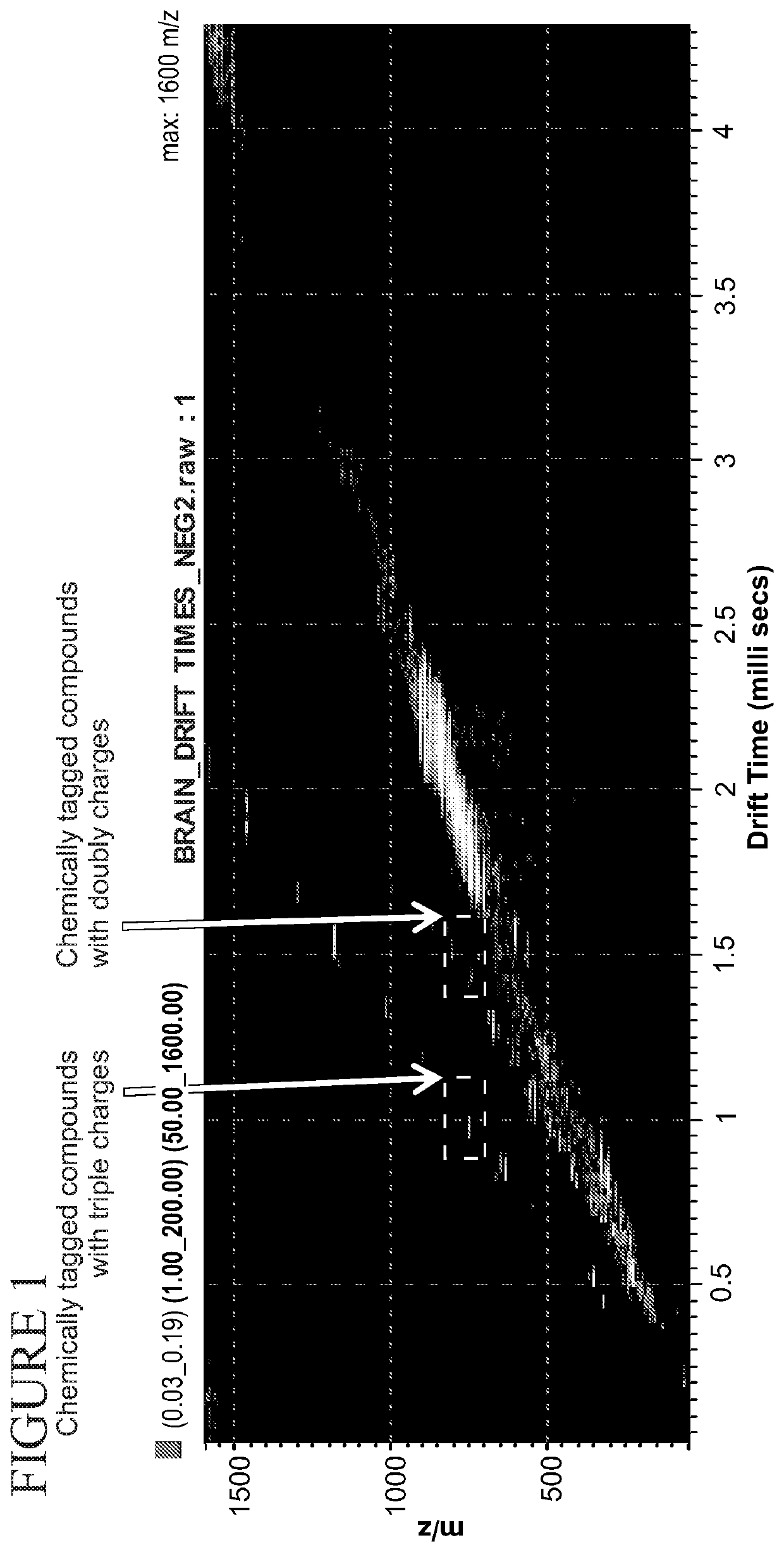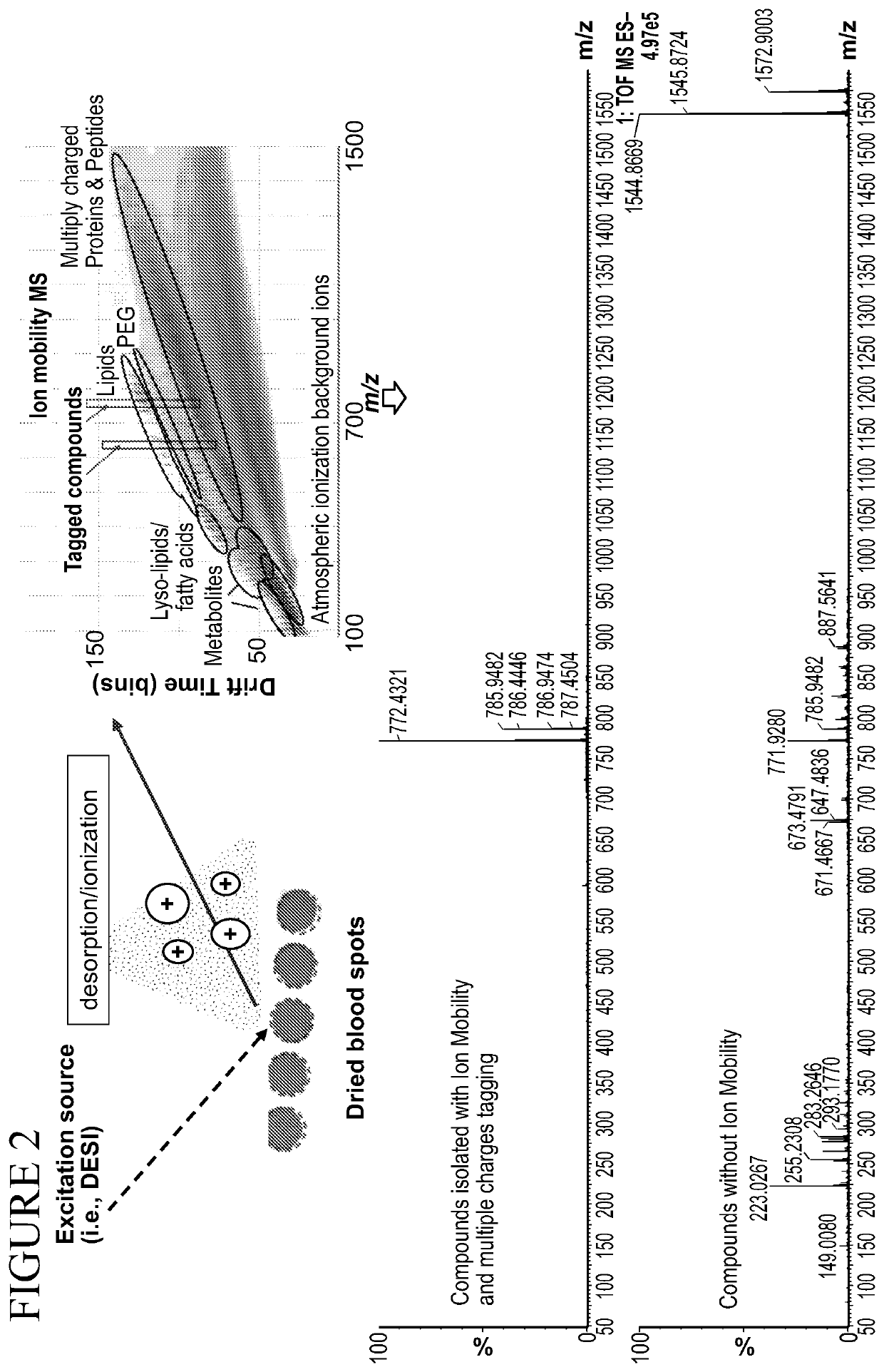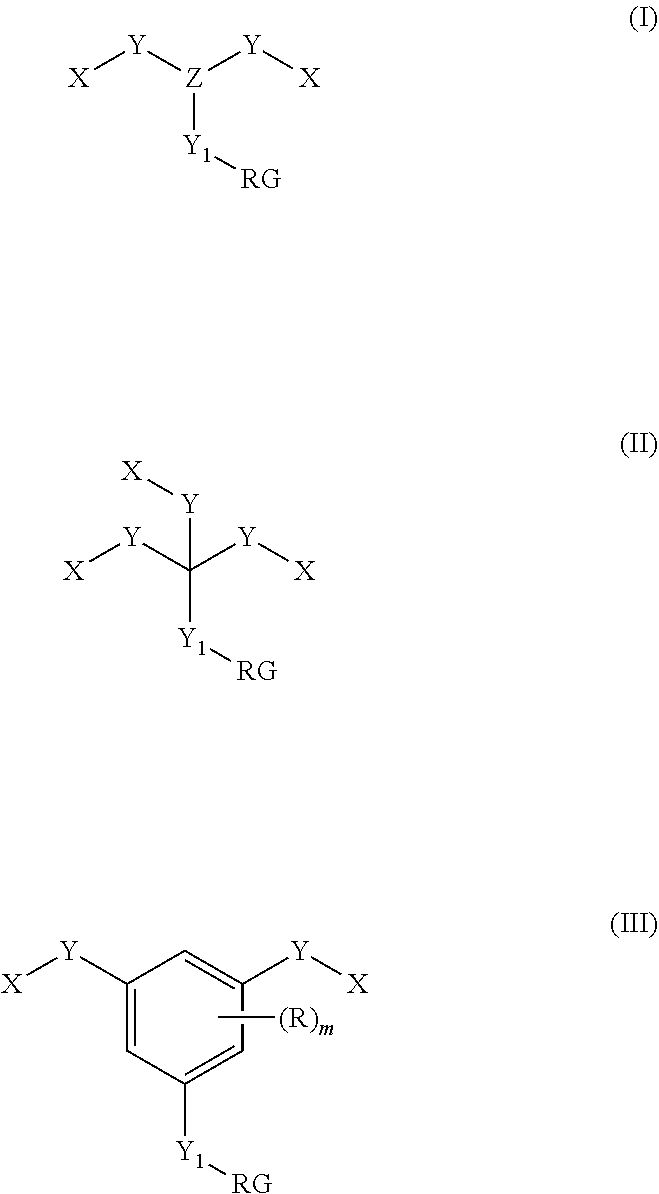Method of using chemical tags to improve the identification, quantification and spatial localization of components in a sample
a chemical tag and component technology, applied in the field of chemical tags to improve the identification, quantification and spatial localization of components in samples, can solve the problems of inability to accurately distinguish and quantify all relevant species from biological samples, inability to use methods to separate components out of complex samples, and inability to accurately distinguish and characterize. , to achieve the effect of improving the resolution of components, improving selectivity, sensitivity, specificity and/or mass accuracy
- Summary
- Abstract
- Description
- Claims
- Application Information
AI Technical Summary
Benefits of technology
Problems solved by technology
Method used
Image
Examples
example 1
[0150]Ionization sources based on electropspray (ESI), including DESI and LAESI, yields multiply charged ions. Charge separation provides that the components in the sample are isolated separate from all other similar species based on charge state. FIG. 1 shows how charge state can be effectively utilized to separate specific lipids out of a complex sample based on charge state alone.
[0151]To exploit the use of CCS information of multiple charged ions to improve MS-imaging applications, we analyzed human brain samples using LAESI coupled to a IM-MS instrument. (See FIG. 1). Using CCS information allowed for the isolation of lipids from metabolites, multiply charged proteins and peptides, and from the background ions associated with atmospheric ionization. Identities of 93 lipid species were confirmed using a combination of mass and CCS measurements. (FIG. 1, top).
[0152]Topographical maps representing the lipid ion distribution in sub-regions of the human brain were created for select...
example 2
[0153]FIG. 2 shows a direct analysis of gangliosides from dried blood spots (DBS) by DESI. Imaging was done using a SYNAPT G2-Si HDMS (WATERS®) equipped with a 2D-DESI source. FIG. 2 also shows that multiply charged ions are clearly separated from the sample using the combined technique IM-MS, whereas characterization of individual components was not at all effective without ion mobility separation.
[0154]Data was generated and analyzed using WATERS® High Definition Imaging Software (HDI) 1.35. Spray conditions were as follows: flow rate of 1 μL / min, with a 98% methanol in water mixture at 100 psi N2 gas pressure and a voltage of 5 kV for both polarities. The scan time was 1 second. Gangliosides and cardiolipins (not shown) were separated out as doubly charged ion species, which allowed them to be isolated using ion mobility against interfering ions.
PUM
| Property | Measurement | Unit |
|---|---|---|
| voltage | aaaaa | aaaaa |
| pressure | aaaaa | aaaaa |
| scan time | aaaaa | aaaaa |
Abstract
Description
Claims
Application Information
 Login to View More
Login to View More - R&D
- Intellectual Property
- Life Sciences
- Materials
- Tech Scout
- Unparalleled Data Quality
- Higher Quality Content
- 60% Fewer Hallucinations
Browse by: Latest US Patents, China's latest patents, Technical Efficacy Thesaurus, Application Domain, Technology Topic, Popular Technical Reports.
© 2025 PatSnap. All rights reserved.Legal|Privacy policy|Modern Slavery Act Transparency Statement|Sitemap|About US| Contact US: help@patsnap.com



